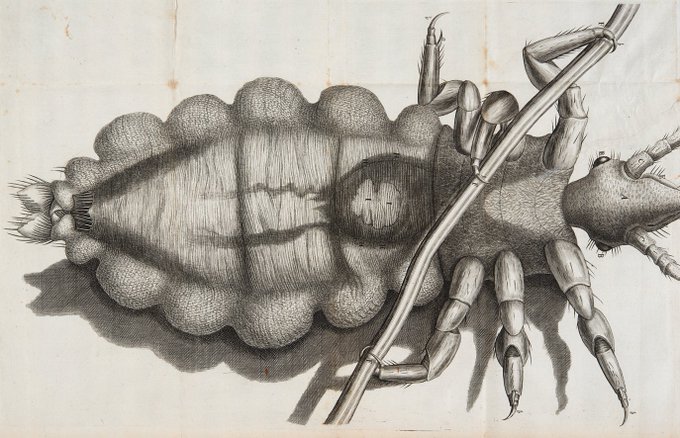Hooke'sのTwitterイラスト検索結果。 8 件
Our Pybus Collecion includes a copy of Robert Hooke's Micrographia, published in 1665. It was one of the first popular science books, and featured drawings of the microscopic world not seen before.
Check out our June 2010 blog post about the work here: https://t.co/CutptbGA8D
@17thCenturyLady @MuseumCromwell @jdmccafferty @cheapsellotape @KingCharlesIRTN @ElizStJohn @clairejowitt @KL_Clements Robert Hooke's book Micrographia was first published in 1664, containing drawings of the creatures he was able to observe through microscopes. It must have given people quite a shock!
Robert #Hooke's "Micrographia" (1665) was the first work to depict microscopic specimens, and includes his famous illustration of a flea. Hooke praised the "beauty" of this creature, with its "suit of sable Armour" and "sharp pinns...like Porcupine’s Quills." 🦔🔬 #ArchivesBugs
At @TheHuntington, “Seeing for Yourself” will look at how artists/scientists have made hidden worlds visible from the 1500s on. The show will feature items ranging from Robert Hooke's “Micrographia,” featuring etchings of minute objects, to depictions of viruses like COVID-19.
Two new #MuseumJigsaws🧩 to start your week off!
If the flea from Robert Hooke's Micrographia doesn't tickle your fancy, then devour the tasty treats of chef Charles Francatelli.
Puzzle away: https://t.co/Wk9UZlgGxP
#RobertHooke's #Micrographia 1667 - wonderful diagrams
#design #illustration #biology #RoyalSociety #FRS #engraving
Hang in there, it's #MonochromeMonday! A 40cm louse on a human hair, from Hooke's 'Micrographia' (1665).



















